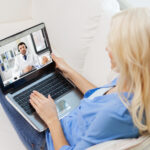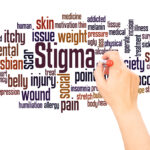
In what follows, we will discuss the critical topic of suicide prevention and awareness, exploring the risk factors, warning signs, and strategies for intervention and support. By shedding light on this important issue, we can work together to save lives and promote mental health and well-being for all.
Suicide is a global public health issue that affects individuals, families, and communities worldwide. Despite its prevalence, it remains a topic shrouded in stigma and silence. With increased awareness and proactive prevention efforts, there is hope for reducing the incidence of suicide and providing support to those who are struggling.
Warning Signs and Risk Factors
Understanding the warning signs and risk factors associated with suicide is crucial for early intervention and prevention efforts. By recognizing these indicators, individuals can proactively offer support and connect distressed people with appropriate resources.
Verbal and Behavioral Indicators
Verbal cues may offer direct or indirect expressions of suicidal ideation. These include statements or remarks that suggest feelings of hopelessness, despair, or a desire to end one’s life. Examples of verbal indicators may include:
- Expressions of feeling trapped or having no reason to live
- Talk of unbearable emotional pain or overwhelming burdens
- Statements about feeling like a burden to others or being a disappointment
- Direct mentions of suicide or self-harm, such as “I wish I were dead” or “I’m thinking of ending it all”
In addition to verbal cues, certain behavioral changes may also signal heightened suicide risk. These behaviors may manifest as increased alcohol or drug use, withdrawal from social activities and relationships, giving away prized possessions or making final arrangements, sudden and unexplained mood swings or changes in behavior, or reckless or impulsive actions, such as driving recklessly or engaging in risky behaviors.
Risk Factors
While warning signs may vary from individual to individual, several risk factors have been identified that may contribute to suicidal thoughts and behaviors. These include:
- Life Crises and Trauma: Experiencing significant life stressors or traumatic events, such as the loss of a loved one, relationship breakdown, financial difficulties, or academic or job-related stress, can increase suicide risk.
- Mental Health Conditions: Individuals living with mental health disorders, such as depression, anxiety, bipolar disorder, schizophrenia, or post-traumatic stress disorder (PTSD), are at heightened risk of suicide.
- Substance Abuse: Substance abuse and addiction can exacerbate feelings of hopelessness and despair, increasing the likelihood of suicidal thoughts and behaviors.
- Environmental Factors: Access to lethal means, such as firearms or medications, can increase the risk of suicide. Additionally, exposure to suicide in the family or community, social isolation, and lack of access to mental health resources may also contribute to suicide risk.
By initiating open and non-judgmental conversations about mental health and suicide, we can create a culture of empathy, understanding, and support. Encouraging individuals to seek help from mental health professionals or support services, such as hotlines or crisis intervention programs, can be lifesaving.

How to Help and Prevent Suicide
When it comes to suicide prevention, every action, no matter how small, can make a significant difference. From providing support to individuals in crisis to implementing proactive prevention strategies, there are various ways to help prevent suicide and support those who are struggling.
If you encounter someone who is suicidal or expressing thoughts of self-harm, it’s essential to take their concerns seriously and provide immediate support. Create a safe and supportive space for them to express their feelings without judgment, and encourage them to seek professional help from a mental health professional or therapist. Follow up with them regularly and check in on their well-being to let them know they are not alone.
At the community and organizational levels, implementing suicide prevention strategies is essential for reducing suicide rates. This involves increasing awareness through educational initiatives and public awareness campaigns, training gatekeepers to recognize warning signs and intervene appropriately, and enhancing access to mental health services and support resources.
Additionally, fostering supportive and inclusive environments where individuals feel valued, respected, and connected is crucial for promoting mental health and well-being.
Finally, for individuals experiencing suicidal thoughts or feelings, coping mechanisms can help manage distress and build resilience. Seeking professional help, building support networks, engaging in self-care activities, and creating safety plans are all effective coping strategies that can help individuals navigate through difficult times.

Final Thoughts
Addressing suicide prevention and awareness requires a concerted effort at both individual and societal levels. By recognizing the warning signs and risk factors of suicide, providing support to those in crisis, and implementing proactive prevention strategies, we can work towards reducing the incidence of suicide and promoting mental health and well-being for all.
Creating supportive environments where individuals are comfortable seeking help and promoting open discussions about mental health are crucial to improving problems with stigma.
This content was written and reviewed by a medical doctor. 
Bad Therapist? A Guide to Protecting Your Mental Health
A bad therapist can significantly hinder a client’s progress by being judgmental, dismissive, or unempathetic, leading clients to feel invalidated or misunderstood.
Digital Mental Health Interventions
In recent years, the field of mental health care has undergone some significant changes with the emergence of digital mental health interventions.
Mental Health in the Workplace
Mental health in the workplace is a critical aspect of overall well-being and organizational success.
Understanding Types of Stigma: Mental Health Challenges
Types of Stigma Stigma surrounding mental health remains a significant barrier to seeking help, accessing treatment, and achieving recovery for many individuals.




